Mascara can make or break your everyday makeup look. It can breathe life into your tired and sleepy eyes and define your facial features more than a liner or eyeshadow can. However, a small mistake in the application can spell the difference between yay or nay.
If you’re already running late, applying mascara can be an extremely challenging task that has even the best of us troubled. As with all things beauty, applying mascara gets easier over time, but here are some pitfalls to avoid, especially when you’re just starting.
Neglecting Brush Size
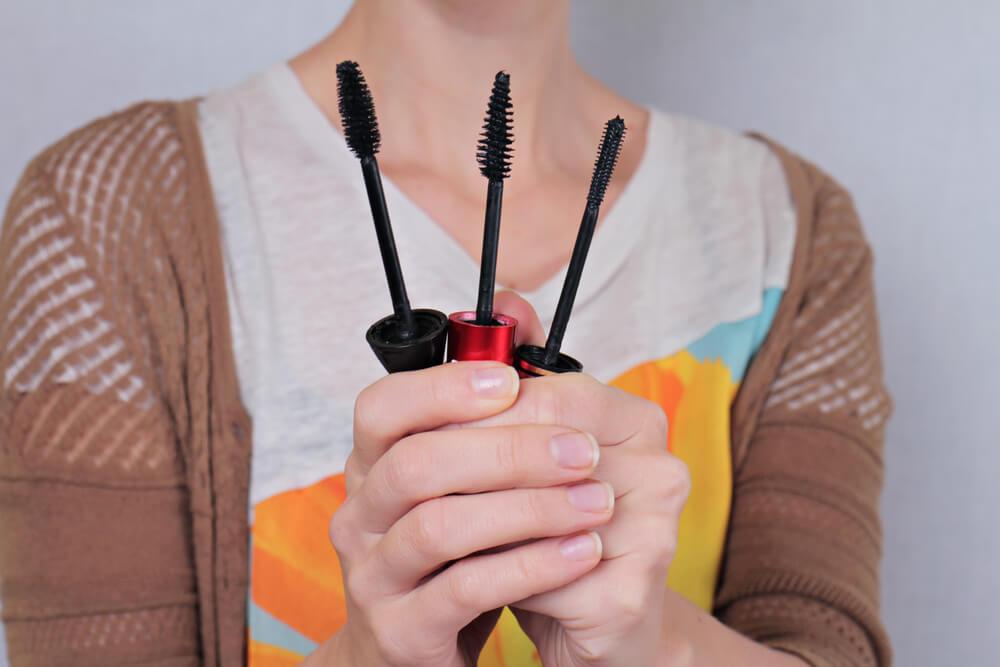
Not all mascaras are created equal. You have to find which wand works best for your needs. If your lashes are short and sparse, it’s best to go for wands with dense bristles that can offer greater definition and volume.
If you’ve been blessed with long and thick lashes that you want to enhance even further, it’s best to look for a formula that can deposit more of the product on your lashes to give you that extra eye boost. The rule of thumb: the shorter your natural lashes, the smaller wand you need. You can also use different wand sizes for your upper and lower lashes, applying the smaller wand on your sparse lower lashes.
To make it easier for you to choose what you need, makeup brands generally classify mascara products into three categories, namely:
- Thickening
- Lengthening
- Curling
Curling After Applying the Product
Your trusty eyelash curler goes hand-in-hand with your mascara to create the appearance of fuller and longer eyelashes. Observing the proper order of things is vital in getting the results you want.
It’s best to curl your lashes before applying mascara, or you risk losing your lashes. Once the product dries, your lashes are more brittle, making them more likely to break when you apply pressure with your curler. There’s a rare chance you could even yank out your eyelashes entirely when it’s already been coated. Yikes.
To curl your lashes properly, position the curler at the base of your lashes and keep it clamped for a good 30 seconds. It’s also useful to prime your lashes to help keep your mascara in place. Hold the primer firmly and focus it at the tip of your lashes to help give your eyes a much-needed lift.
Pump & Dump
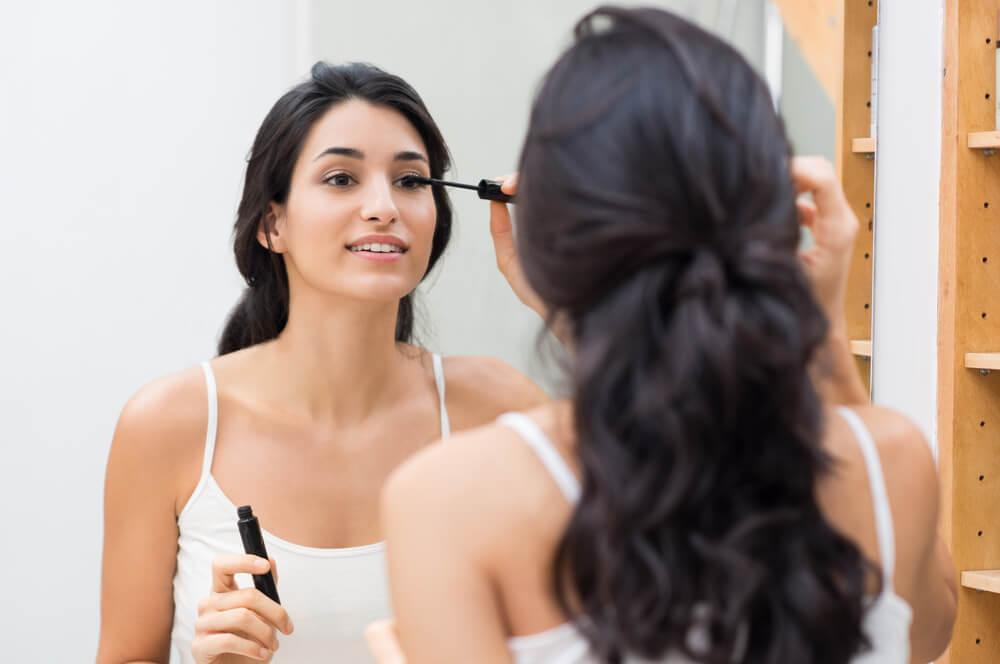
To get those perfect long lashes, it seems logical to pump the wand in and out of the tube since that will get you more product, right? But here’s the kicker.
This is a common mistake in applying mascara since it pushes air into the tube, causing the mascara to dry out faster and lead to clumps. The air trapped by pumping can also breed harmful bacteria that may cause you to flare up or trigger an allergic reaction.
Instead of harsh pumping motions, try twisting the brush gently within the tube or make small circular motions to get as much product as you can.
Using the Same Old Techniques
Once your lashes are curled and primed, you’re all set to put on your mascara. There are a variety of techniques, and you have to see what works best through trial-and-error. Here’s what the beauty experts have to say:
Conventional Applications
Start at the root of your lashes and wiggle the wand outward to add as much length to your lashes. Apply up to three coats to ensure a long-lasting effect.
You can also try applying mascara to closed eyes. This underrated beauty hack allows you to spread the product more evenly. To do this, close one eye, start at the roots of the lashes, and slowly roll to the top. Repeat the rolling motion until you get the desired effect.
If you keep your eye closed while putting on mascara, the liquid can latch onto the lashes more thoroughly. The product can end up heavier at the tips when you apply mascara with your eyes wide open.
Prioritizing Lower Lashes
Consider applying mascara to your lower lashes first, where you have less room to move around. Starting from the top is counterintuitive in some cases since there’s a risk that the mascara will smudge when you look down.
To do this, tilt your head forward and hold the wand straight up to apply the product in short, quick strokes carefully. Don’t worry if you don’t get this right the first time! You can use a small piece of paper to keep the mascara from getting all messed up. After applying, you can also add a small amount of face powder under the eye so that it won’t smudge.
For your top lashes, makeup experts say it’s best to look straight ahead. Since your top lashes are longer, you can move the brush in a zig-zagging motion instead of the short, quick motions you use for your lower lashes.
Apply mascara as evenly as possible; you don’t want your mascara getting all clumpy at the tips of your lashes. However, if the product gets too close to the root, it could block the glands that lubricate your eyes. This can cause a condition called dry eye, preventing your eyes from forming the tears you need to see clearly.
If you encounter any mistakes in mascara application and the product rolls to your cheeks, resist the urge to scrub it off. Let it dry first before removing it with a clean mascara applicator.
Sticking to Old Mascara
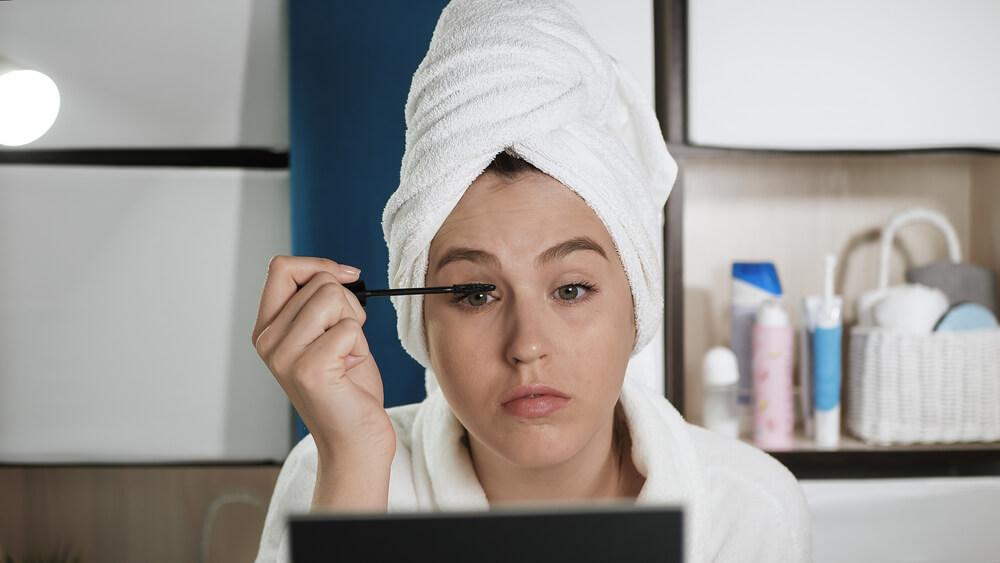
We tend to get attached to our makeup, especially if they saw us through special moments in our lives. The lipstick you used on a date that went well? The waterproof mascara that lasted through a hot day?
We’ve all been there, but here’s the deal.
Mascara, like all makeup products, has a limited shelf life. Three months to be exact.
Since you apply mascara to a sensitive area in your eye, you need to let the tube go once it reaches the end of its shelf life even if you haven’t exhausted the product yet. Expiry dates aren’t something you can always readily see in makeup packaging, so you have to take responsibility for labeling your products well and saying goodbye when their days are up. If your mascara is drying up,
Likewise, avoid adding tap water or saliva to your mascara to make it last longer. We know your makeup’s probably crazy expensive, and you want to maximize it, but this is not the way to go. Tap water and saliva can get potentially harmful substances into your tube, which can eventually make their way into your eye.
Throw your mascara out once the product turns a different color or starts to smell funny. If you stick with your old makeup out of sentimentality, you risk getting an infection or allergic reaction. And we don’t want that to happen!
Since there’s very little room to maneuver in applying mascara, common mistakes like slipping the applicator could easily irritate the eye and result in infection. In extreme cases, mascara has triggered inflammation of the conjunctiva or the mucous membrane lining the eyelids.
According to the fact-checking website Snopes, there were more than 2,000 emergency room visits due to the misapplication of mascara in 1983. Imagine what the numbers are today, given the widespread popularity of this convenient cosmetic product.
The FDA estimates that there are many cases of women ending up with eye infections from old cosmetics every year, with a few ending up temporarily or permanently blinded.
Here are a few additional safety tips to maximize your mascara without incurring the health risk:
- Make sure your hands are clean before applying eye makeup.
- Don’t share your makeup with other people to avoid cross-contamination.
- Avoid storing your makeup hot places with temperatures above 85°F (29°C).
- Wipe your makeup kit free of any dust or dirt with a damp cloth.
- Avoid using mascaras when you’re wearing contacts.
- If you have any allergies, take extra precautions when using eye makeup.
Not Investing in Waterproof Makeup
Regular variants may be cheaper but consider investing in waterproof eye makeup that can endure scorching afternoons and last long into the night. Waterproof mascara promises not to smudge all day long, so there’s little to no need to re-apply as often.
Mascara products can be roughly divided into two types: formulas with no water or emulsions of water and oil. Both have their advantages, with the former being less likely to smudge while the latter is less likely to flake.
Water is the dominant ingredient in mascara’s cosmetic composition, accounting for 60–95% based on the product’s weight.
In addition to water, let’s go through the other critical components that make up most mascara products.
Humectant
Glycerin is among the most preferred humectants and should account for 0.1–3% of mascara composition. Since humectants are agents that draw and retain moisture, they are commonly used in a wide range of beauty products.
Hydrophobic Pigment
Any mascara incorporates at least one cosmetically acceptable hydrophobic colorant. This represents anywhere from 1–12% of the mascara’s total weight and is particularly useful in repelling water, making the mascara less likely to smudge.
Water Dispersible Thickening Agent
TEA-Carbomer 940 is the most preferred agent and represents about 0.5–5% of mascara composition. Often used in personal care products, carbomers are a series of polymers derived from acrylic acid that suspend an insoluble solid in a liquid and prevent emulsions from separating. This makes them useful in regulating the consistency of the skin, hair, nail, and makeup products.
Film-Forming Resin
Polyvinyl alcohol is the preferred resin and accounts for 0.5–4% of the mascara. Upon drying, it forms a thin coating on the skin or hair.
Together with water, these form the five essential ingredients of a mascara product. The following may be added as optional components in its cosmetic composition:
- Moisturizing agent
- Additional preservatives
- Sequestering agent
- Drying agent
Despite the advantages of waterproof makeup, remember to wear waterproof formulas sparingly since removal takes some toll on your lashes and skin! It’s best to have a healthy mix of waterproof and regular makeup products you could use depending on the occasion.
Failing to Remove Makeup Properly
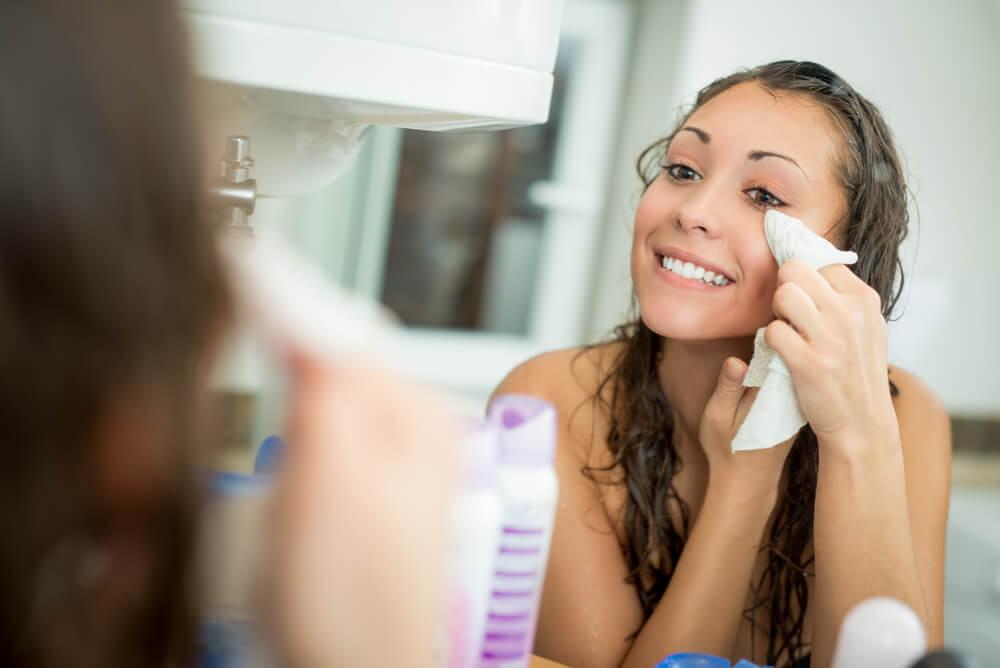
You might already know this, but if you don’t remove your makeup correctly and thoroughly, you risk clogging your pores or developing a disease.
An extreme case published in the journal of the American Academy of Ophthalmology cited a 50-year-old Australian woman who used mascara heavily for more than 25 years but failed to take them off sufficiently.
After complaining about irritation in her eyes, it was discovered that darkly pigmented lumps caused by the buildup of mascara bits had already infiltrated her eyelids, with some going through the conjunctival surface.
According to the online reports, the woman had to go through a procedure to remove the lumps but was left with permanent scarring on her eyelids.
We don’t want that to happen, so take some time to remove your makeup every night. If your mascara is waterproof, it’s best to choose a product specially formulated for waterproof makeup. Here are a few tips to remove stubborn mascara:
Soak a pad or a wet wipe with eye makeup remover
It’s best to use a soft pad that’s not too abrasive on your skin. You can opt for gentle wet wipes designed to remove makeup and press it on the eye area for a few seconds.
Drag the pad slowly over your eye
Make sure that a sufficient amount of makeup remover has latched into your lashes before moving the pad down. Avoid tugging a section of your coated lashes since you can pull out the hair! Give the product time to do its work.
The skin around your eyes is more delicate and one of the areas most likely to show signs of premature aging. It’s best to avoid rough motions when removing makeup around this area.
Keep in mind that this applies not just to makeup removal but with skincare products as well!
Use a Q-tip soaked in makeup remover
If your pad can’t remove stubborn makeup, it’s time to use a more precise tool like a Q-tip that can get in between those lashes. Repeat the process until the makeup eventually comes off.
Final Thoughts
Putting on makeup makes many of us feel more confident and beautiful. Not applying makeup properly will only defeat the purpose of using it in the first place. It’s really important to know what mistakes you should avoid when using mascara, especially because you’re using it near your eyes! As we’ve mentioned, it can even cause infections.
But hey, that’s why we wrote this for you, right? Make sure to follow our tips and your pretty lashes will beautifully frame your gorgeous eyes!

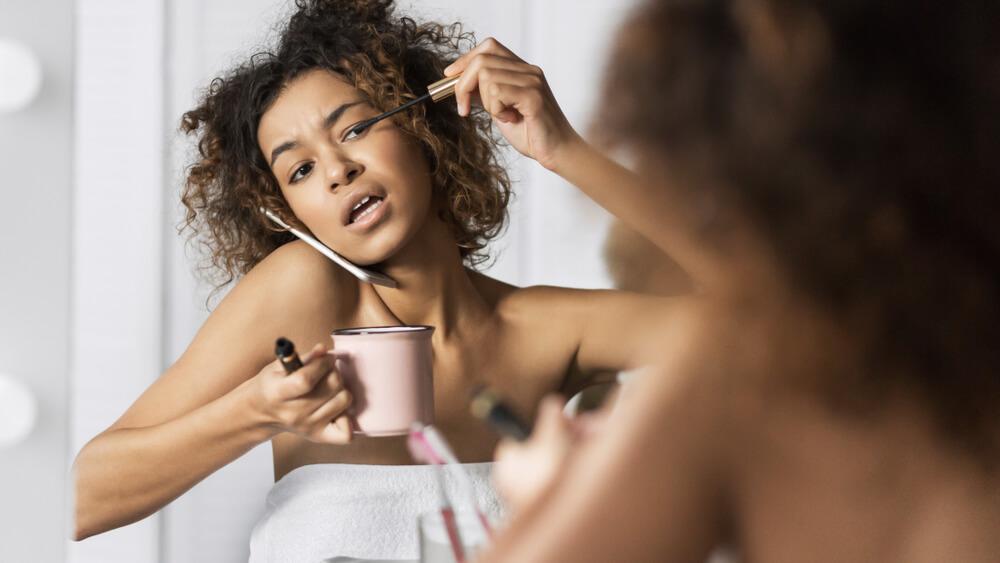
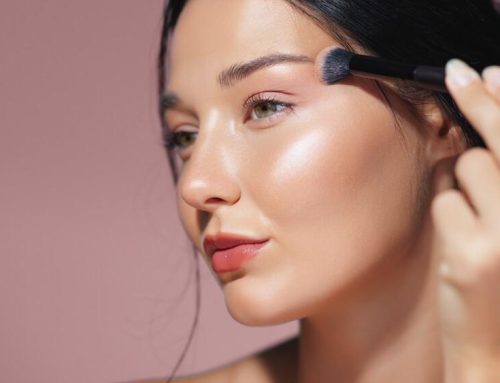
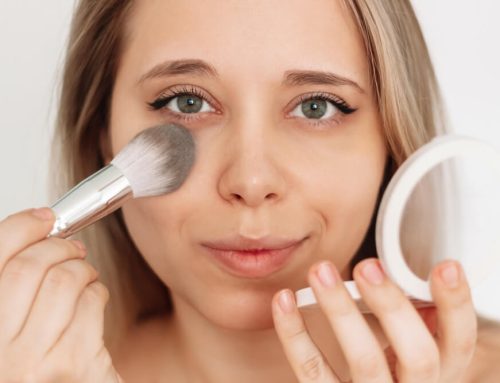

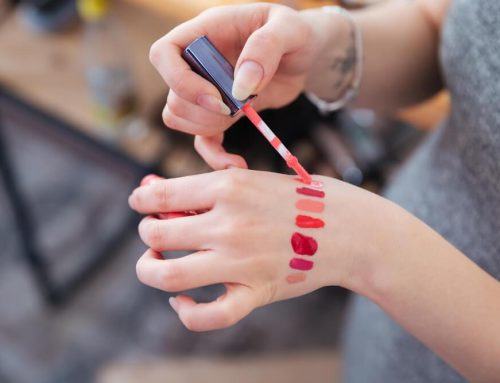
Leave A Comment